Tea Latte
A tea latte combines the bold flavors of tea with the creamy richness of milk, offering a comforting alternative to coffee-based lattes.
Definition
A tea latte is a beverage that consists primarily of steamed milk and a tea base, often made from strong-brewed black, green, or herbal tea. Unlike traditional lattes made with espresso, your tea latte uses tea leaves or tea bags.
Origins
The concept of the tea latte is said to have originated in the United States. It gained recognition in the 1990s when coffeehouses began to feature the drink as an alternative for those who prefer tea over coffee. Its roots may be traced back to traditional British tea practices that involved milk.
Bestsellers
Popularity
Tea lattes have become popular for their versatility and customizability. They can be enjoyed hot or iced, and with a variety of teas:
- Black Tea Lattes: Often made with Assam or Earl Grey.
- Green Tea Lattes: Typically use matcha powder for a distinctive flavor.
- Herbal Tea Lattes: Feature caffeine-free options like rooibos or chamomile.
The addition of flavors such as vanilla, cinnamon, or honey makes tea lattes a widely beloved beverage across the globe.
Types of Tea Lattes
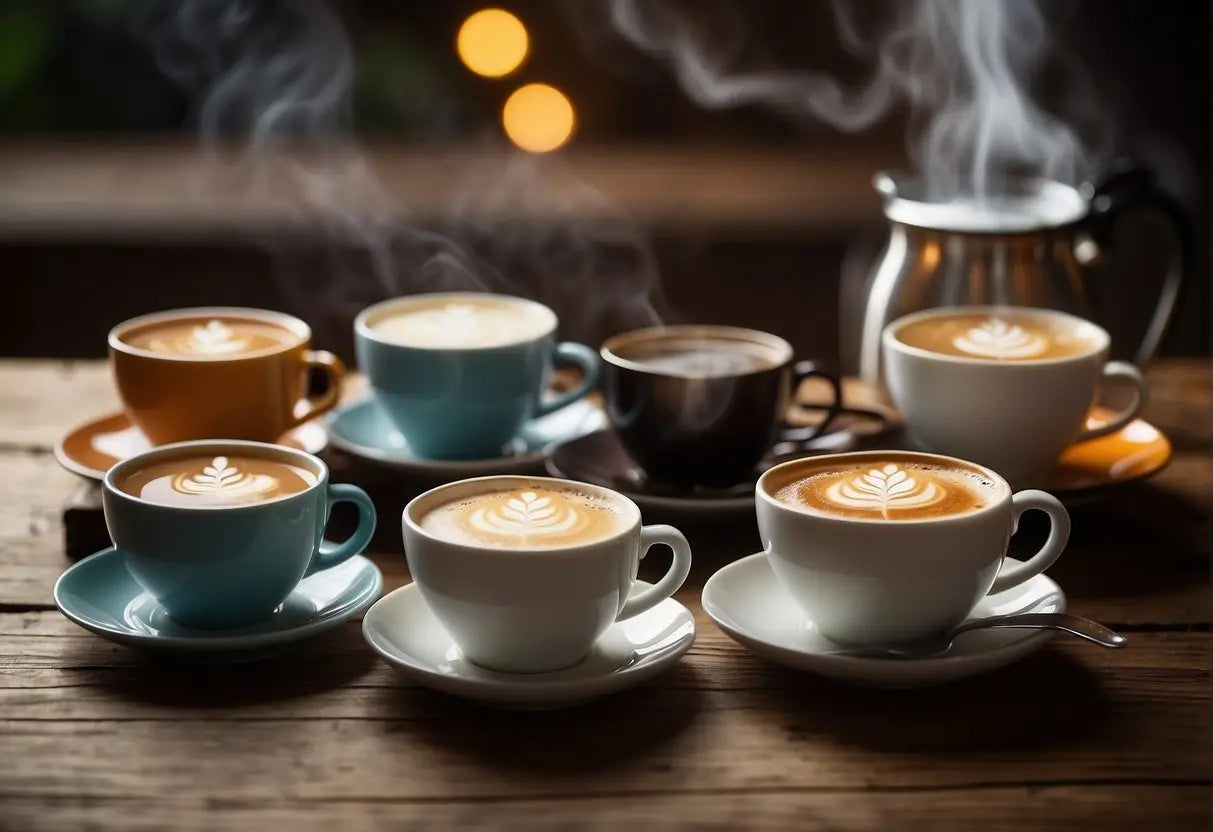
Tea lattes combine the robust flavors of tea with the creamy texture of milk. Below, you'll find four popular variations each offering a unique taste experience.
Matcha Latte
Matcha latte features matcha powder—ground from high-quality green tea leaves—which gives it a vibrant green color and a distinct, slightly sweet, grassy flavor. Traditional matcha lattes include:
- Steamed milk (dairy or non-dairy)
- Matcha powder
- Optional sweetener (like honey or sugar)
Chai Latte
A chai latte is a spiced tea beverage with a base of black tea mixed with aromatic spices. Key ingredients:
- Black tea
- Classic spices: cinnamon, cardamom, cloves, ginger, and black pepper
- Steamed milk and a layer of foam
Earl Grey Latte
An Earl Grey latte, also known as a "London Fog," merges the citrusy flavor of Bergamot orange with black tea. It's typically made with:
- Strongly brewed Earl Grey tea
- Steamed milk
- A hint of vanilla syrup for sweetness
Rooibos Latte
Rooibos latte is caffeine-free and made from the South African rooibos herb. It has a naturally sweet and nutty flavor. Essential components:
- Brewed rooibos tea
- Steamed milk
- Optionally flavored with vanilla or cinnamon
Preparation Techniques
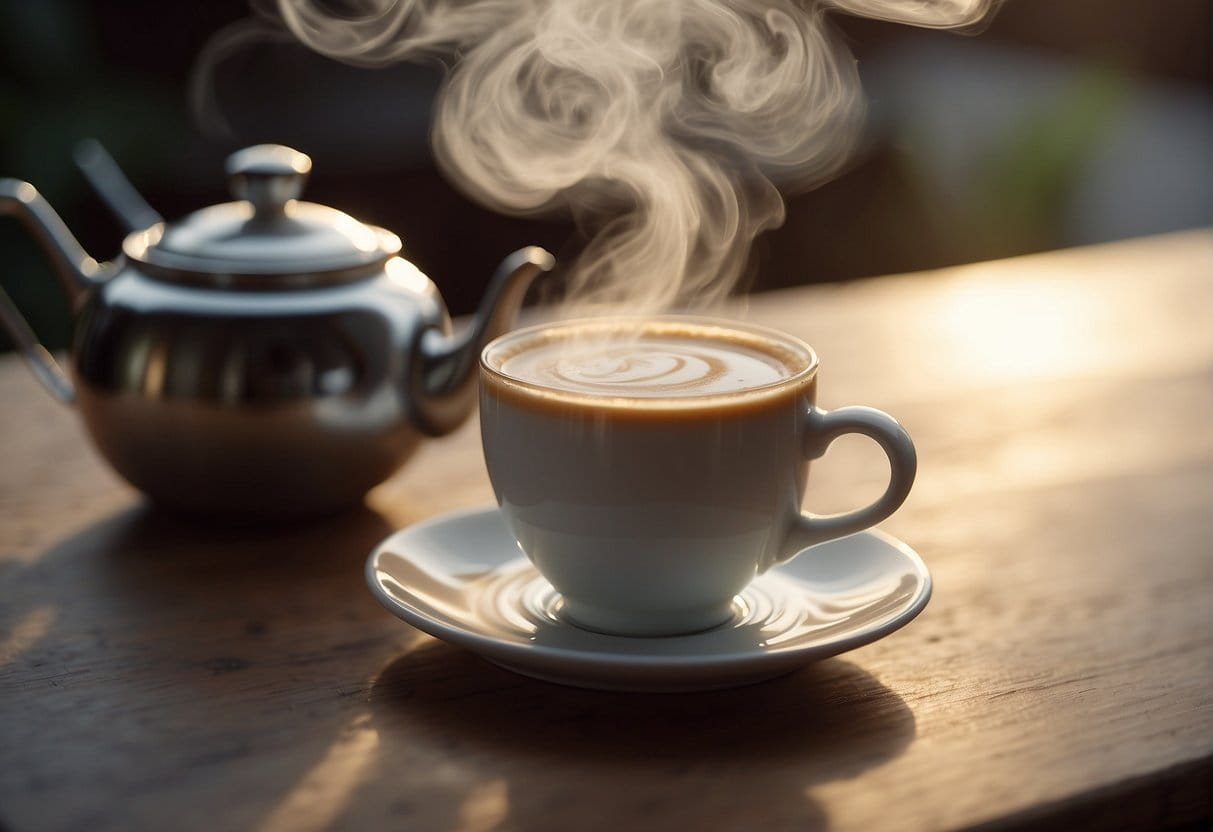
Creating a tea latte involves a few fundamental steps: steeping the tea to the right strength, frothing milk to achieve a creamy texture, and combining both elements with precision.
Steeping Tea
To start, select your tea—loose-leaf or a tea bag. For a strong flavor, use one tablespoon of loose-leaf tea or one tea bag per 8 ounces of water.
- Temperature: Heat water just short of boiling, between 190°F to 205°F.
- Time: Allow to steep for 3 to 5 minutes, depending on the type of tea and desired strength.
Frothing Milk
Choose a milk or milk alternative and heat it gently without allowing it to boil.
Lao Ban Zhang
- Tools: Use a frother, whisk, or blending wand to create foam.
- Temp: Aim for a temperature of around 150°F to 155°F for the best texture.
Layering
Pour the steeped tea into your cup first, followed by the frothed milk.
- Ratio: Aim for about 2/3 tea to 1/3 milk for a balanced tea latte.
- Technique: Hold back the foam with a spoon and gently pour milk into the tea, then spoon the milk foam on top.
Ingredients and Proportions
Crafting the perfect tea latte involves choosing the right types of tea, milk, and optional sweeteners and spices to create a harmonious and delightful beverage. Each component contributes to the flavor profile and richness of the latte.
Types of Tea
- Black Tea: Assam or Earl Grey for a robust flavor.
- Green Tea: Matcha powder is a popular choice for a smooth taste.
- Oolong Tea: Offers a balance between the bold and delicate.
- Herbal Tea: Chamomile or Rooibos can be used for a caffeine-free latte.
The proportion for tea typically ranges from 1 to 2 teaspoons of loose leaf tea or one tea bag per 8 ounces of water.
Types of Milk
- Cow's Milk: Creates a thick froth and adds creaminess; use whole milk for the richest flavor.
- Alternative Milks: Almond, soy, coconut, or oat milk for a dairy-free option, with varying levels of frothiness.
For milk, aim for a ratio of 1:1 or 1:2 between tea and milk, depending on how creamy you like your latte.
Sweeteners and Spices
- Sweeteners: Honey, sugar, or maple syrup to taste.
- Spices: Cinnamon, cardamom, or vanilla extract to enhance the flavor.
Typically, 1 to 2 teaspoons of sweetener and a pinch or just a dash of spice are sufficient for one serving, but you can adjust these amounts to suit your palate.
Serving and Presentation

When serving a tea latte, the choice of glassware, garnishes, and temperature impacts both the aesthetic appeal and the taste experience.
Glassware and Cups
Choose clear glassware for showcasing the distinct layers of a tea latte, or opt for a traditional ceramic cup to retain heat. Sizes typically range from 8 to 16 ounces.
- Clear Glass: Allows visibility of layers; 12 oz is common.
- Ceramic Cup: Preserves heat; 8 oz for stronger flavor concentration.
Garnishes
Adding a garnish not only enhances visual appeal but can also complement the flavor profile.
- Spices: A dash of cinnamon or nutmeg adds a delicate finish.
- Syrups: Artful drizzling of caramel or chocolate syrup for a sweet touch.
Temperature
Serve your tea latte hot, typically between 155°F and 165°F. For iced versions, ensure it's chilled properly without dilution.
- Hot: Use a thermometer to reach the optimal range.
- Iced: Chill tea separately before adding milk to avoid dilution.
Nutritional Information
When you enjoy a tea latte, you're indulging in a beverage that can vary widely in nutritional value. Key factors include the type of milk, added sweeteners, and the kind of tea used.
Calories
- Plain Tea Latte: A standard tea latte made with 2% milk generally contains about 150-200 calories per 8-ounce serving.
- Sweetened Tea Latte: If sweeteners like sugar or syrup are added, the calorie content can increase significantly, sometimes to upwards of 250-300 calories per serving.
Health Benefits
- Antioxidants: Tea lattes made with black, green, or herbal tea contain antioxidants which could contribute to the reduction of oxidative stress in your body.
- Bone Health: The inclusion of milk provides a good source of calcium and vitamin D, important for bone health.
Dietary Considerations
- Non-Dairy Alternatives: Opting for non-dairy milk like almond, soy, or oat milk can alter the calorie count and nutritional profile, often reducing the overall calorie and fat content.
- Sugar Content: Be aware of the added sugars in flavored syrups. Choosing unsweetened or lightly sweetened lattes can help manage sugar intake.
Cultural Significance
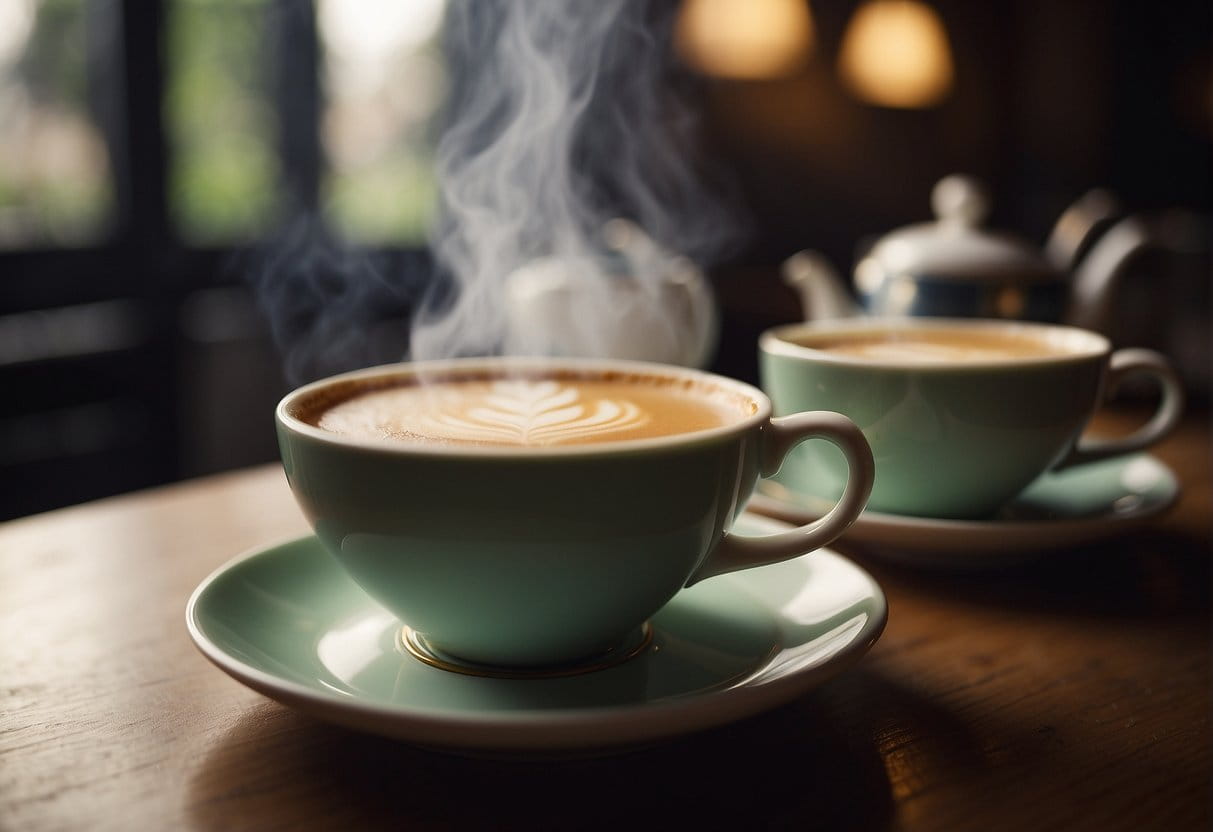
Tea lattes, a fusion of traditional tea and creamy milk, have woven their way into the fabric of various cultures by blending the ritualistic heritage of tea with contemporary lifestyle.
Tea Ceremonies
Tea ceremonies have long been a profound element within many cultures, notably in Japan with the Cha no yu and in China with the Gongfu tea ceremony. These ceremonies are meticulous and rich with symbolism, where every motion is purposeful and steeped in tradition. Tea is more than a beverage; it's a medium for expression and a bridge to cultural understanding.
- Japan: The process involves multiple steps, including cleansing, whisking Matcha, and precise serving methods.
- China: Focuses on the careful selection of tea leaves, the artful pouring, and the enjoyment of nuanced flavors.
Modern Cafe Culture
In cafes worldwide, tea lattes have become an emblem of modern indulgence and social interaction. They have adapted to fit the bustling lifestyle of today's society while providing a nod to traditional tastes.
- Adaptation: Recipes have been tweaked to cater to local tastes, incorporating various types of teas like Chai, Matcha, and Earl Grey.
- Social Aspect: The rise of coffeehouse chains has contributed to popularizing tea lattes, making them a featured drink for social meetups and work breaks.
Home Preparation Tips

To make a tea latte at home, begin by choosing your tea. Black teas like Earl Grey or Chai are popular options, but green teas and herbal teas can also work well.
Ingredients & Tools:
- Tea (loose leaf or bagged)
- Milk (dairy or non-dairy)
- Sweetener (optional)
- Saucepan or microwave-safe container
- Tea cup
- Milk frother or whisk
- Strainer (if using loose leaf tea)
Instructions:
1. Brew the Tea:- For loose leaf: Use 1 tablespoon of tea per 8 ounces of water.
- For tea bags: One bag per 8 ounces of water.
- Heat water to just before boiling and steep tea for the recommended time.
- Use an equal amount of milk to water.
- Heat gently in a saucepan or microwave until hot but not boiling.
- Use a frother or whisk vigorously to create a foam.
- Strain the tea into your cup if using loose leaf.
- Pour the frothed milk over the tea.
- Sweeten to taste.
Flavor Tips:
- To enhance your tea latte, add a sprinkle of cinnamon or a drop of vanilla extract.
- Customise your drink by using different types of sweeteners like honey, sugar, or maple syrup.
Remember to keep an eye on the milk as it heats to prevent it from scalding and adjust the strength of your tea to personal taste. Enjoy your homemade tea latte!
Popular Tea Latte Recipes

Tea lattes combine the comforting flavors of tea with the creaminess of milk, creating a popular beverage enjoyed worldwide. Here, you'll learn about classic recipes and discover some innovative twists.
Classic Recipes
Chai Latte:
- Ingredients: Black tea, chai spices (cinnamon, cardamom, cloves, ginger), milk, sweetener
- Instructions: Brew strong black tea with chai spices. Heat and froth your choice of milk. Combine and sweeten to taste.
Matcha Latte:
- Ingredients: Matcha green tea powder, hot water, milk, optional sweetener
- Steps: Whisk matcha powder with hot water until smooth. Heat and froth milk, then pour over the matcha. Sweeten if desired.
Innovative Twists
Turmeric Tea Latte:
- Ingredients: Turmeric, milk, black pepper, cinnamon, honey
- How to Make: Heat milk with turmeric, black pepper, and cinnamon. Add honey to taste. Blend until frothy and serve.
Lavender Earl Grey Latte:
- Components: Earl Grey tea, dried lavender flowers, milk, vanilla extract
- Process: Steep Earl Grey and lavender in hot water. Froth milk with vanilla extract. Combine and enjoy a fragrant beverage.
Pairing with Food
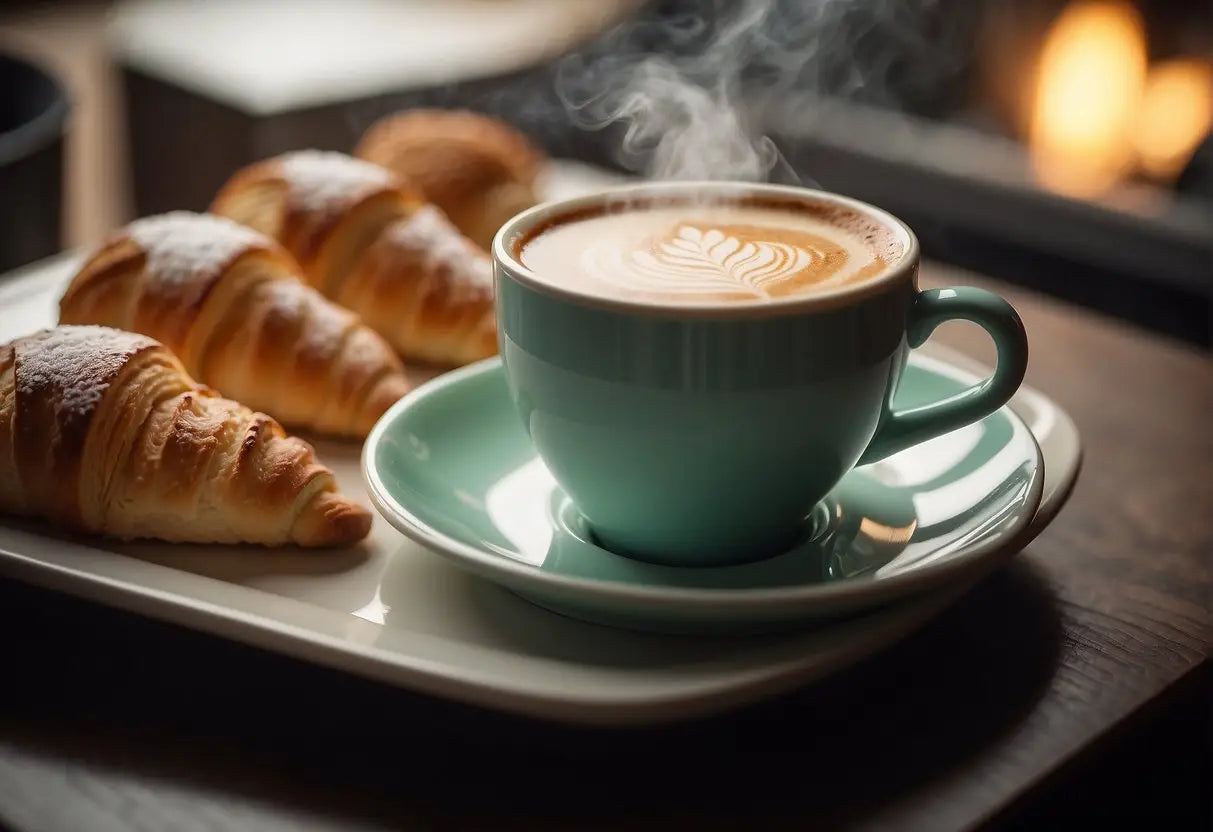
When you're savoring a warm, frothy tea latte, pairing it with the right food can enhance your experience. Here are some popular food combinations that go well with different types of tea lattes:
Matcha Tea Latte:
- Sweet: Mini mochi or Japanese dorayaki pancakes.
- Savory: Sesame rice crackers or matcha-flavored scones.
Chai Tea Latte:
- Sweet: Cinnamon rolls or carrot cake.
- Savory: Pakoras or samosas with tamarind sauce.
Earl Grey Tea Latte:
- Sweet: Shortbread cookies or lemon drizzle cake.
- Savory: Quiche Lorraine or cucumber sandwiches.
Tea lattes can be quite creamy and rich, so selecting food that can either complement or cut through this texture is key. Here's a suggested pairing guide:
| Tea Latte Flavor | Sweet Pairing Options | Savory Pairing Options |
|---|---|---|
| Matcha | Mochi, Green tea cakes | Edamame, Seaweed snacks |
| Chai | Spiced cakes, Cookies | Indian snacks, Cheese |
| Earl Grey | Scones, Fruit tarts | Blinis, Soft cheese |
For the best experience, try to match the intensity of your tea latte with your choice of food. A bold chai latte pairs beautifully with equally strong flavors like ginger snaps. On the other hand, an Earl Grey tea latte with its delicate bergamot notes can be overpowered by too robust a flavor, so opt for more subtle pairings like a slice of Victoria sponge cake.
Remember, these suggestions are just starting points. Feel free to experiment with your own combinations to find what delights your palate.
Commercial Availability
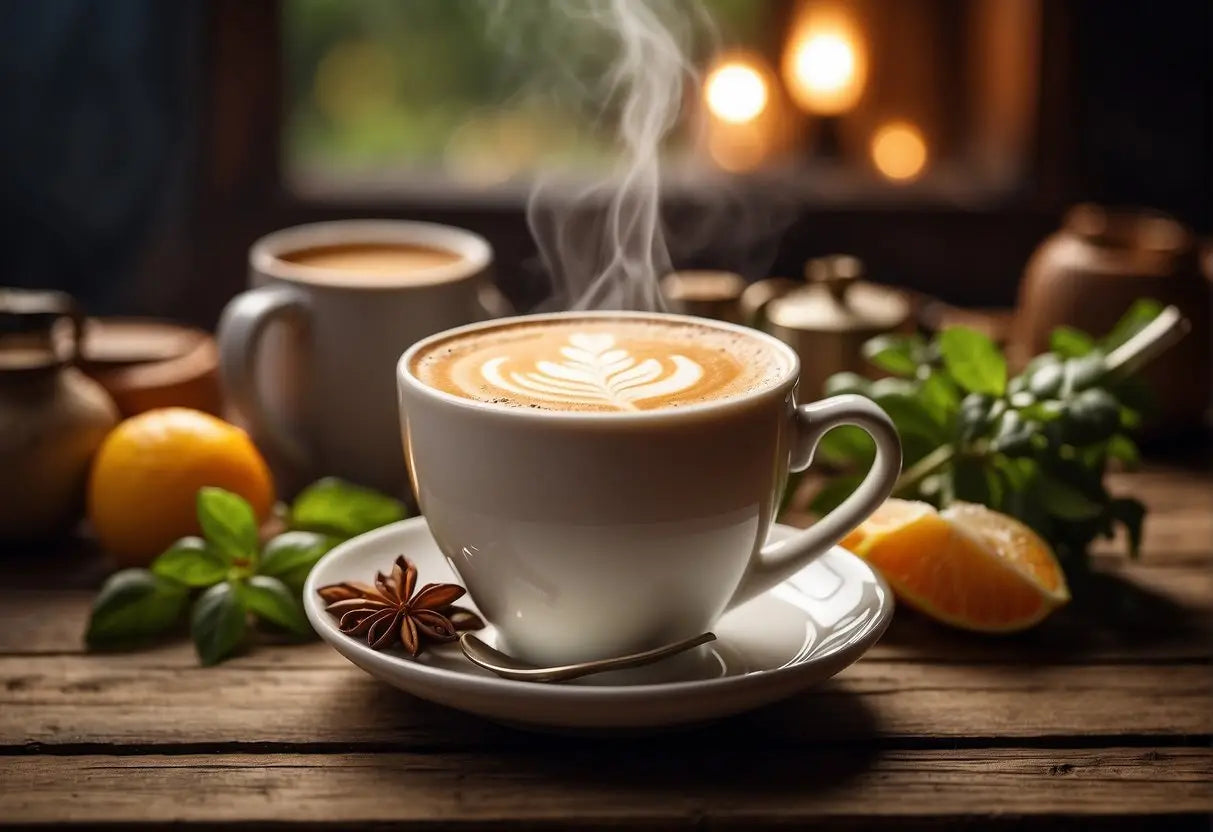
Tea lattes have become widely available and can be found in both specialized and mainstream outlets. Depending on your preferences, you may choose to enjoy them at a local establishment or grab a pre-packaged version from a store.
Cafes and Teahouses
When visiting cafes and teahouses, you're likely to find a variety of tea lattes on the menu. Starbucks, for instance, offers the popular Chai Tea Latte and Matcha Green Tea Latte. Local teahouses might provide bespoke blends, offering a unique twist on the traditional tea latte. Many establishments make their tea lattes from scratch, using steamed milk and brewed tea leaves or matcha powder.
-
Major Coffee Chains:
- Starbucks
- Peet's Coffee
- The Coffee Bean & Tea Leaf
-
Local Teahouses:
- Variety of unique blends
- Customization options for milk and sweeteners
Pre-packaged Options
For convenience, you'll find pre-packaged tea lattes in many grocery stores. Brands like Tazo and Oregon Chai offer bottled or carton versions that you can enjoy cold or heated up. Additionally, some brands provide tea latte mixes in powder form that only require the addition of hot water or milk.
-
Popular Brands:
- Tazo
- Oregon Chai
-
Types of Pre-packaged Tea Lattes:
- Bottled ready-to-drink
- Powder mixes
Trends and Innovations

In the ever-evolving landscape of tea lattes, recent innovations have reshaped how you experience these comforting beverages. Bold flavors and health-conscious additions are on the rise.
Matcha Tea Lattes: Once a niche offering, matcha has gone mainstream. With its vivid green color and umami-rich taste, it brings visual appeal and a powerful antioxidant punch to your cup.
Dairy Alternatives: A surge in plant-based milks caters to your dietary preferences and allergies. Oat milk leads this trend, favored for its creamy texture and light, sweet flavor that complements tea latte profiles.
Sweeteners: Refined sugar is taking a backseat. All-natural sweeteners like honey, agave, and stevia are being integrated, allowing you to indulge with a lower glycemic impact.
Flavor Innovations: Exotic and culinary-inspired ingredients are being introduced, such as:
- Lavender
- Turmeric
- Chai spices
Collaborations with local artisans have also brought forward a "farm-to-teacup" concept, promoting fresh, seasonal flavors you can savor.
Functional Add-Ins: Your tea latte can now double as a health elixir. Add-ins such as CBD oil for relaxation and collagen for skin health are becoming popular.
Tech in Tea: High-tech brewing techniques ensure that every cup you enjoy is consistent. Automated machines can now customize your tea latte to your exact preferences, delivering a personalized experience that mirrors the skill of a seasoned barista.
Customer Reviews and Preferences
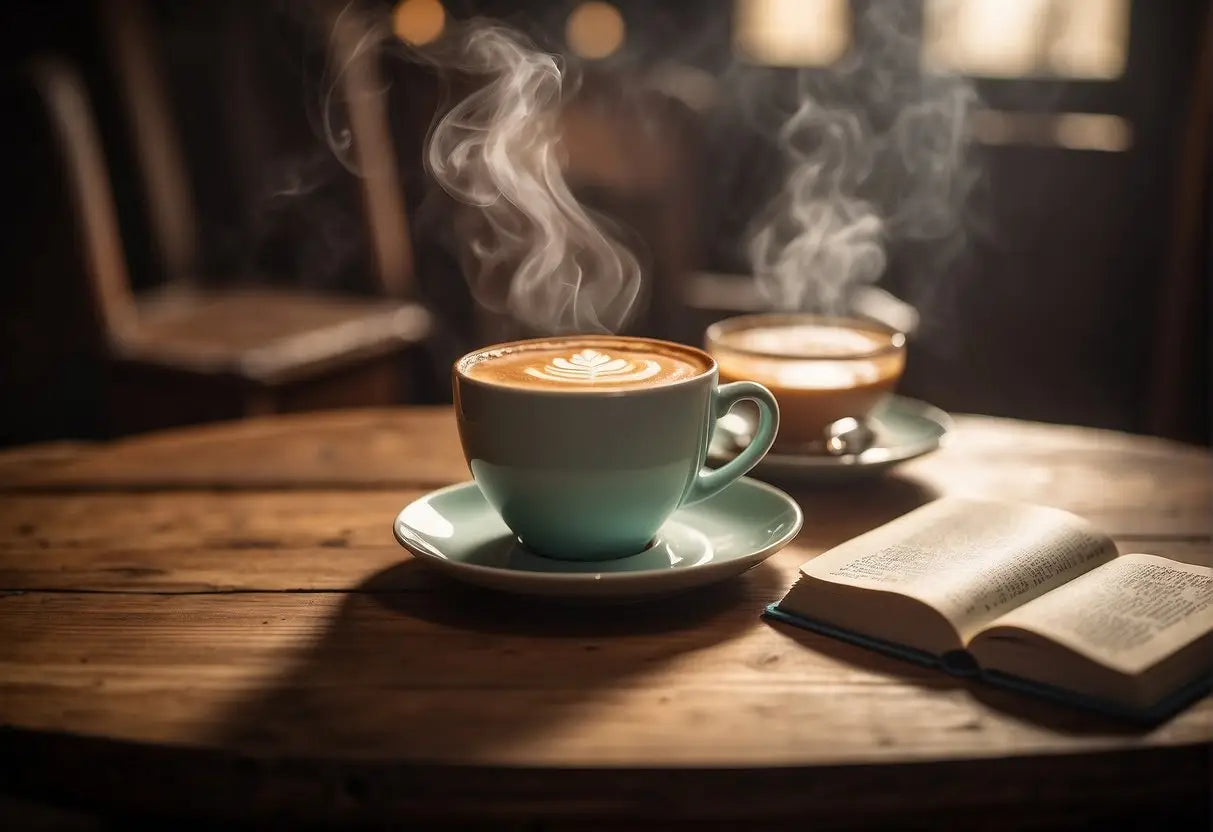
When exploring various customer reviews, you'll notice that preferences vary widely. Among tea latte aficionados, the classic Matcha Tea Latte often receives high praise for its smooth flavor and perceived health benefits.
-
Flavor: The Matcha Tea Latte is typically described as having a rich, creamy taste with a balance of sweet and umami flavors, which resonates well with customers looking for a non-coffee option.
-
Texture: Reviewers commonly mention the frothy, creamy consistency, appreciating the skillful blend between tea and milk.
For those who crave something less traditional, the Chai Tea Latte stands out. Customers frequently highlight the following:
-
Spice Level: The Chai Tea Latte's blend of spices like cinnamon, cardamom, and ginger is noted for its ability to offer warmth and complexity.
-
Sweetness: Some find the traditional Chai Tea Latte excessively sweet and often suggest asking for fewer pumps of syrup to tailor it to individual tastes.
A rapidly growing favorite is the Earl Grey Tea Latte, known for its:
-
Citrus Notes: Reviewers appreciate the distinctive bergamot orange flavor, which provides a refreshing twist to the milky beverage.
-
Fragrance: The aromatic quality of Earl Grey is regularly mentioned as a comforting and enjoyable aspect of the latte.
Customers also contribute to useful tips:
-
Customization: Suggestions include adjusting the milk choice or adding sugar-free syrups for dietary preferences.
-
Temperature: A common recommendation is to order lattes extra hot to maintain warmth while savoring the drink slowly.
Remember, your personal preference is key. Consider the range of flavors and customization options to discover the tea latte that best suits your palate.
← Older post Newer post →











